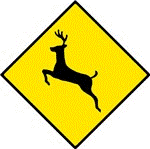United States Department of Agriculture, National Wildlife Research Center Symposia

Human Conflicts with Wildlife: 2002 Symposium
Date of this Version
August 2000
Abstract
The question “When should investment in pest control stop?” either explicitly or implicitly underpins decisions concerning pest control made at every level of enterprise or government, regardless of whether these decisions are tactical or strategic. Bioeconomic modeling provides a quantitative framework for considering the benefits and costs of alternative pest control strategies. In this case study, we develop 3 bioeconomic models that examine strategies based on helicopter shooting and 1080 poisoning, for reducing feral pig (Sus scrofa) predation of newborn lambs in wool-growing enterprises located in Australia’s rangelands. In the first model, marginal analysis indicated that helicopter shooting was more profitable than 1080 poisoning when pasture biomass was above 220 kg•ha-1, and was most profitable when feral pig density was reduced to 1.5•km-2. Below pasture biomass of 220 kg•ha-1, 1080 poisoning became more profitable than helicopter shooting. The second model added logistic population growth for pigs so that control could be simulated through time. While the net benefit from helicopter shooting was still maximized when applied annually, and the profitability of 1080 poisoning was still dependent on pasture biomass, the return on investment from both strategies increased markedly. While the third model, which added stochastic environmental variation, further increased the profitability of control, it also introduced uncertainty to the net benefits realized. For helicopter shooting, annual application remained most profitable.

